format_quoteCarTango is Changing the Game — Want In?
Be among the first to know — and get exclusive perks at launch.Launching Soon
 access_time_filled
Become an Early-bird
access_time_filled
Become an Early-bird
 access_time_filled
Become an Early-bird
access_time_filled
Become an Early-bird

Every driver thinks they know at least a little something about cars. After all, we’ve grown up around them—learning from our parents, from mates, and from the endless stream of tips and tricks floating around online. The problem? Not everything we’ve been told is true.
Car myths are like urban legends: part fact, part fiction, repeated so often that they stick. Some myths started out true in the days of carburettors and carbons, but technology has moved on. Others? Pure marketing spin that stuck in the public’s imagination.
In this article, we are putting five of the most common myths under the spotlight. From premium fuel to wheel size, winter warm-ups to oil changes, we’ll separate fact from fiction—and probably save you a bit of cash in the process.
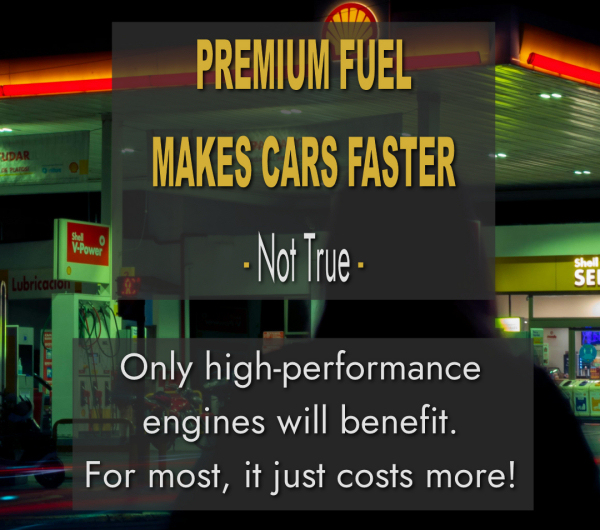
The Claim:
“Stick premium in your tank and your car will go faster.”
The Reality:
Unless you’re driving a high-performance car, premium fuel won’t give you more speed—it’ll just give you a higher bill.
Pull up to the pumps and you’re faced with a choice: regular unleaded at a “reasonable” price, or the premium option with names like “Ultimate Performance” or “V-Power Racing.” It’s marketed like an energy drink for your car—of course people assume it gives an extra kick.
Premium fuel has a higher octane rating. This means it resists “knocking”—the premature ignition of fuel in the cylinder. High-compression engines, like those in performance cars, need higher octane to run smoothly. In those engines, it can unlock extra performance.
But if your car was designed for regular unleaded (and that’s most cars on the road), it simply doesn’t take advantage of that higher octane. You’ll get no noticeable benefit.
Our Take: “If your daily is a hatchback or family SUV, stick to regular. Premium is like buying a lottery ticket for horsepower—it’s a gamble with no payout.”
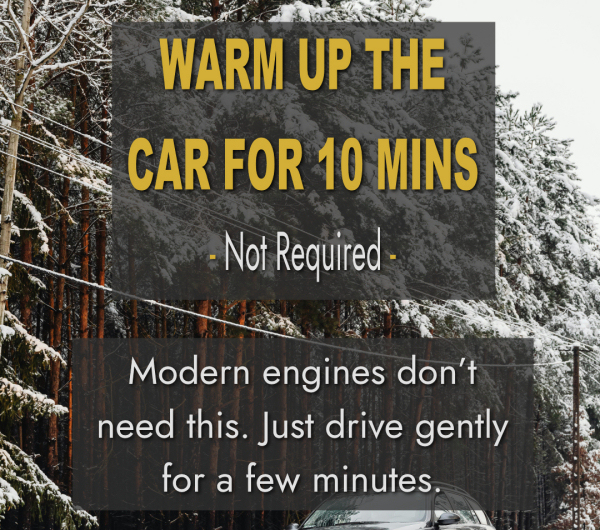
The Claim:
“Start your car, leave it idling for 10 minutes on a frosty morning, and it’ll warm up better.”
The Reality:
Modern engines don’t need this. In fact, idling can do more harm than good.
Back in the days of carburetors, engines were clunky when cold. Oil was thick, fuelling was crude, and warming up was essential before hitting the road. Fast-forward to today: electronic fuel injection, synthetic oils, and engine management systems have made that ritual redundant.
Start the engine, wait 20–30 seconds for oil to circulate, clear your windscreen, and drive off gently. The engine warms up faster under light load than sitting still.
A fleet manager for a UK delivery company once cut out warm-up idling across 100 vans. The result? A 10% drop in fuel costs over winter. Multiply that across thousands of drivers, and it’s a lot of wasted diesel saved.
Our Take: “Stop idling like it’s 1985. The best warm-up for your car is… driving it.”
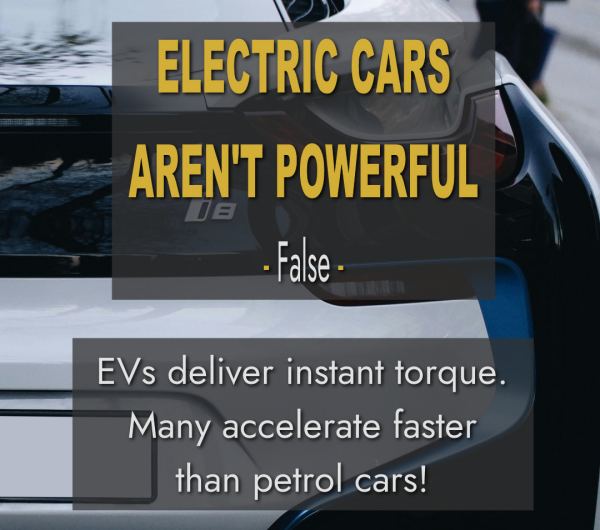
The Claim:
“EVs are weak, boring, and slow compared to petrol cars.”
The Reality:
EVs are often quicker. In fact, many leave petrol cars in the dust.
Electric motors deliver maximum torque instantly. Petrol engines need to rev up before delivering full power, but EVs give you all of it the moment you touch the pedal. That’s why even a family EV feels punchy in town.
That’s supercar territory. Meanwhile, many “fast” petrol hot hatches can’t crack 5 seconds.
Early EVs were slow—think milk floats or the first-generation Nissan Leaf. But that was a decade ago. Today’s EVs prove silence can be devastatingly quick.
Our Take: “Don’t confuse quiet with weak. EVs aren’t the future—they’re already here, and they’re already fast.”
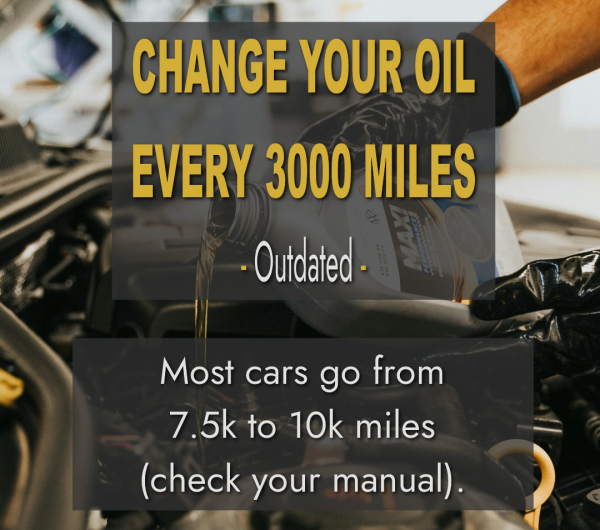
The Claim:
“You should change your oil every 3,000 miles, or your engine will suffer.”
The Reality:
That advice is decades out of date. Modern oils and engines last far longer.
In the 70s and 80s, oil quality was poor. Engines weren’t as advanced. A 3,000-mile oil change made sense. But modern synthetic oils? They last 7,500–10,000 miles, sometimes even longer.
Oil life monitors in modern cars measure driving habits, not just miles.
A study by AAA in the US found that following the “3,000-mile myth” costs drivers an extra $1.3 billion annually in unnecessary oil changes.... ouch!
Our Take: “Trust your manual, not outdated advice. Save the money for something more fun than oil changes.”
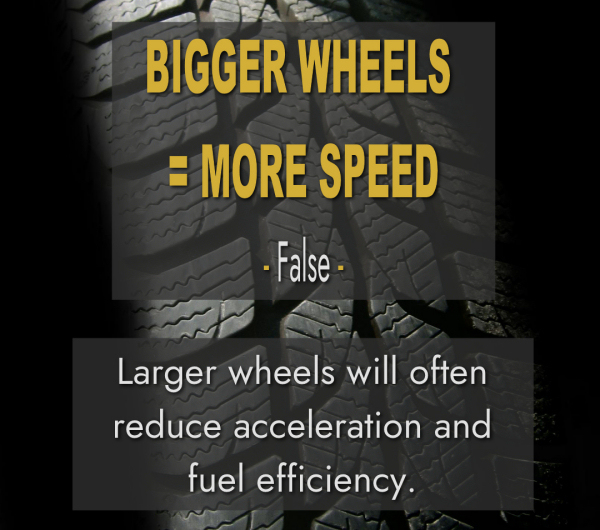
The Claim:
“Stick some big alloys on your car and it’ll go faster.”
The Reality:
Bigger wheels often make your car slower, less efficient, and less comfortable.
Race cars and high-end performance cars use big wheels, so the assumption is that size = speed. Plus, let’s be honest, bigger wheels look sportier.
BMW offers the 3 Series with 17-inch, 18-inch, or 19-inch wheels. Same engine, different wheels:
Our Take: “Bigger wheels are a style choice, not a speed hack. Don’t confuse showroom looks with race track performance.”
Car myths are sticky because they mix a little truth with a lot of assumption. They sound believable, and sometimes they used to be true—but technology has moved on.
Cars are complicated enough without old wives’ tales muddying the waters. Next time you hear one of these myths at the pub, you’ll know the facts—and maybe win a pint off the mate still convinced his Fiesta needs V-Power.
Which of these myths did you believe before? Or do you know a funny one we didn’t cover? Drop it in the comments on our myth busting posts on Instagram, Tiktok or X.